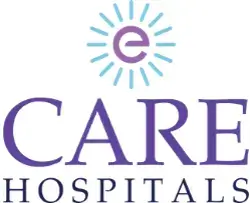-
Doctors
-
Specialities & Treatments
Centre of Excellence
Specialties
Treatments and Procedures
Hospitals & Directions HyderabadCARE Hospitals, Banjara Hills CARE Outpatient Centre, Banjara Hills CARE Hospitals, HITEC City CARE Hospitals, Nampally Gurunanak CARE Hospitals, Musheerabad CARE Hospitals Outpatient Centre, HITEC City CARE Hospitals, Malakpet
HyderabadCARE Hospitals, Banjara Hills CARE Outpatient Centre, Banjara Hills CARE Hospitals, HITEC City CARE Hospitals, Nampally Gurunanak CARE Hospitals, Musheerabad CARE Hospitals Outpatient Centre, HITEC City CARE Hospitals, Malakpet Raipur
Raipur
 Bhubaneswar
Bhubaneswar Visakhapatnam
Visakhapatnam
 Nagpur
Nagpur
 Indore
Indore
 Chh. Sambhajinagar
Chh. SambhajinagarClinics & Medical Centers
Book an AppointmentContact Us
Online Lab Reports
Book an Appointment
Consult Super-Specialist Doctors at CARE Hospitals

Griseofulvin
Griseofulvin
Fungal infections affect millions worldwide, causing discomfort and concern for those who experience them. Doctors often prescribe griseofulvin, a well-established antifungal medication, to treat various fungal skin, hair, and nail infections. This comprehensive guide explains everything patients need to know about griseofulvin, including griseofulvin 500mg uses, proper administration, potential side effects, and necessary precautions.
What is Griseofulvin?
Griseofulvin is a prescription-only antifungal medication that comes from a soil fungus called Penicillium griseofulvum It is oral medication used for treating fungal infections.
Griseofulvin Tablet Uses
Griseofulvin medication shows particular effectiveness in treating several specific conditions. These include:
- Skin infections like jock itch and ringworm
- Athlete's foot
- Scalp infections
- Fingernail and toenail fungal infections
- Hair-related fungal conditions
How to Use Griseofulvin Tablet
Taking griseofulvin correctly is essential for the medication to work effectively. Patients should take the tablet with a glass of water, preferably during or after a meal containing fat.
Foods like whole milk, ice cream, or a cheeseburger help the body absorb the medicine better.
The medication can be taken either once daily or split into two doses, depending on the doctor's instructions. Taking it twice daily might prove more effective for patients who don't respond well to a single daily dose.
Treatment Duration Guidelines:
- Skin infections (tinea corporis): 2-4 weeks
- Scalp infections (tinea capitis): 4-8 weeks
- Foot infections (tinea pedis): 4-8 weeks
- Nail infections (tinea unguium): 6-12 months
Patients should take antifungal griseofulvin at evenly spaced intervals throughout the day. Those who miss a dose should take it as soon as they remember, unless it's almost time for the next scheduled dose.
Side Effects of Griseofulvin Tablet
Most patients experience mild side effects that typically resolve on their own:
- Headache and dizziness
- Nausea and stomach upset
- Diarrhoea and heartburn
- Trouble sleeping
- Mild skin rash or itching
Serious Side Effects:
- Severe skin reactions with symptoms like:
- Blistering or peeling skin
- Fever
- Swelling of face or tongue
Liver-related Concerns: Patients should watch for signs of liver problems, particularly when taking high doses or using the medication for extended periods. Warning signs include:
- Unusual tiredness or weakness
- Stomach pain
- Loss of appetite
- Yellowing of skin or eyes
- Easy bruising
Precautions
Patients taking griseofulvin need to follow specific safety measures to ensure effective treatment.
- Systemic Conditions: Inform the doctor about allergies or medical conditions, especially liver disease, lupus, or porphyria.
- Alcohol: Avoid alcohol while taking the medication, as it can cause rapid heartbeat and flushing. Patients who drive or operate machinery should also exercise caution.
- Family Planning: Use reliable birth control methods, as this medicine can reduce the effectiveness of hormonal contraceptives. Women should not become pregnant while taking griseofulvin. Men planning to father children should wait at least six months after completing treatment before trying to conceive.
- Sun Protection: Stay protected from sunlight, as the medication increases sun sensitivity. When spending time outdoors, wearing protective clothing and sunscreen with an SPF of at least 15 is crucial. For fair-skinned individuals, a higher SPF might be necessary.
How Griseofulvin Tablet Works
When a patient takes griseofulvin, it first gets absorbed into the bloodstream and makes its way to keratin-producing cells. Keratin is the protein that makes up skin, hair, and nails. The medication binds to these cells, creating a protective barrier that helps prevent future fungal growth.
Griseofulvin enters the fungal cells at the cellular level through energy-dependent transport processes. Once inside, it binds to fungal microtubules essential for cell division. This binding action prevents the fungi from multiplying properly, effectively stopping the spread of infection.
What makes griseofulvin particularly effective is its ability to concentrate on newly formed keratin. As the body produces new skin cells, hair, and nails, they become naturally resistant to fungal invasion. This process explains why treatment often needs to continue until the infected tissue has been completely replaced with new, healthy growth.
Can I Take Griseofulvin with Other Medicines?
Medication interactions require careful attention when taking griseofulvin.
Important Medication Interactions:
- Antacids and H2 blockers
- Blood-thinning medications like warfarin may become less effective
- Hormonal birth control effectiveness may decrease
- The combination of griseofulvin and alcohol can cause severe reactions, including nausea and vomiting.
- Women using hormonal contraceptives should use additional birth control methods during treatment, as griseofulvin may reduce their effectiveness.
Dosing Information
Griseofulvin oral medication comes in two forms: microsize and ultra microsize tablets, with dosing requirements varying based on age, weight, and type of infection.
Adult Dosing Guidelines:
- Microsize formulation: 500 mg daily for common infections, up to 1000 mg daily for widespread infections
- Ultra microsize formulation: 375 mg daily, which may be increased to 750 mg for difficult infections
Doctors calculate the dose for children above 2 years based on body weight. The microsize formulation typically requires 10 mg/kg/day, while the ultra microsize formulation needs about 7.3 mg/kg/day. Children weighing 13.6-22.7 kg receive 125-250 mg daily.
Conclusion
Griseofulvin stands as a reliable treatment option for patients struggling with persistent fungal infections. This medication proves particularly valuable when topical treatments fail to deliver results, offering hope for those dealing with stubborn skin, hair, and nail infections.
Successful treatment depends on following the prescribed dosage schedule and completing the entire course of medication. Patients should remember that different infections require different treatment lengths - from a few weeks for skin conditions to several months for nail infections. Taking the medication with fatty foods helps maximise its effectiveness.
Safety remains paramount during treatment. Patients should watch for potential side effects and maintain regular communication with their doctors. Though side effects might occur, most people complete their treatment successfully when following proper guidelines and precautions.
FAQs
1. How long does griseofulvin take to work?
Griseofulvin begins working immediately, but visible improvements may take several days or weeks. The medication's effectiveness becomes noticeable as new, healthy tissue grows to replace infected areas.
2. What happens if I miss a dose?
Patients should take a dose as soon as they remember if they miss one. However, if it's almost time for the next scheduled dose, they should skip the missed dose and continue with their regular schedule.
3. What happens if I overdose?
In case of griseofulvin overdose, you should seek immediate medical intervention or contact your local poison control centre. While unlikely to cause serious harm with a single extra dose, medical monitoring may be necessary.
4. Who cannot take griseofulvin?
Griseofulvin is not suitable for:
- People with liver failure
- Those with porphyria
- Pregnant women or those planning pregnancy
- Children under 2 years
5. How many days do I have to take griseofulvin?
Treatment duration varies by condition:
- Skin infections: 2-4 weeks
- Foot infections: 4-8 weeks
- Hair/scalp infections: 4-6 weeks
- Fingernail infections: 3-4 months
- Toenail infections: At least 6 months
6. Why is griseofulvin taken at night?
Doctors often recommend griseofulvin with milk or after a meal to improve absorption and reduce stomach upset. Taking it at night helps ensure consistent absorption through proper food timing.
7. Can I take itraconazole and griseofulvin together?
While no direct interactions exist between itraconazole and griseofulvin, doctors typically recommend against taking multiple antifungal medications simultaneously. Individuals should consult their doctor before combining these medicines.
8. Is griseofulvin effective?
Studies show griseofulvin is highly effective against various fungal infections, particularly when other topical treatments have failed. Success rates are highest when patients complete the entire prescribed course.
9. Is griseofulvin a steroid?
No, griseofulvin is not a steroid. It belongs to the antifungal class of medications. While it may affect hormone levels, it works by disrupting fungal cell growth rather than through steroid-based mechanisms.

